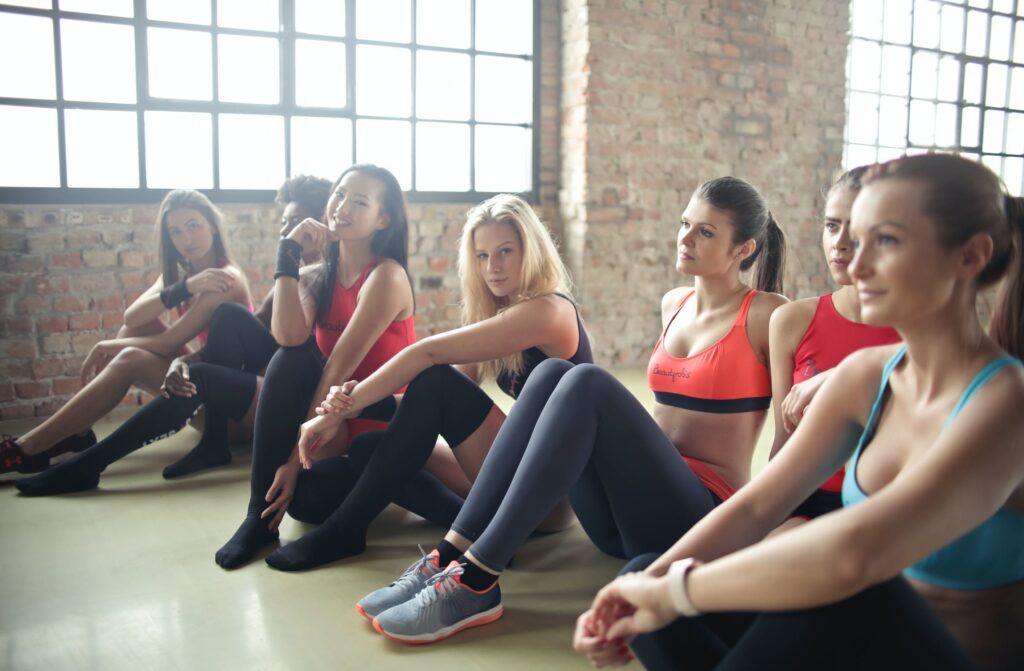
Occasionally, someone asks me about women’s-only self-defense classes. They’re a popular offering and often fill quickly, so clearly there is a market for them. The question for me, though, is whether they’re a good idea that serves the student population well, in a way that will make them actually safer when they leave. After all, much of what I’ve found and shared with you as part of On Her Own’s work is that there are an awful lot of self-defense ideas that sound nice in theory but end up only making people feel safer without anything more. There are certainly some positive aspects to a women’s-only environment, and they can be particularly important when it comes to the hard work of deciding you are worth fighting for and getting comfortable with the actions that fighting might require. However, there are also some problematic elements that can’t be overcome without going co-ed during the learning process. My recommendation is to look for classes and programs that include both men and women as students, but with some caveats. Here’s why and how:
Self-defense is a psychologically demanding topic, especially for those who have previously been victimized. It can be difficult to have frank discussions about sensitive topics like sexual assault and rape in mixed-gender groups, whether or not there are any people in it who have experienced them. Students can be shy or ashamed to talk about their fears, but even more so when their cohort seems so different from them or might look like their attackers in some way. Beyond that, actually going hands-on with someone who looks like your worst nightmare, drawn from real life or otherwise, can be scary. While any technique practice in a class is intended to be safe, it certainly might not feel that way to a traumatized or terrified brain that will shut down any other learning that might occur in the session. For some women, the solution is a class without men. I can understand that, and think it can be an important tool to getting started in the journey of learning how to protect yourself. However, I suggest that a diverse environment with a friendly and supportive atmosphere might work as well initially or as a next step. That way, a woman can begin to work through those personal challenges with people who may look like her fears but are also manifestly there to help and not hurt her. From an instructor perspective, of course, this does require creating a classroom culture that values vulnerability and empathy. As a student many times over myself, I can tell you they exist.
Role models who “look like” are important, both because some physical skills may need modification and to show students what is possible. In women’s-only classes, a woman instructor or assistant and fellow classmates can fill that role. However, there is nothing stopping a co-ed class from being led by a woman, except perhaps the ego of potential students, or from having a male instructor ask a woman to co-teach, assist, or coach. For that matter, there’s nothing stopping anyone from recruiting more women to take a class that’s open to all, perhaps by asking a friend to come along. Even without, though, an experienced and knowledgeable instructor should be able to meet students where they are, with techniques that take their bodies into account and real-world examples of how they’ve worked for people who are similar to any doubtful students. In addition to including a woman assistant or co-instructor, they might attract returning women students who are able to demonstrate higher levels of competence, including succeeding against men who are resisting a demonstrated technique.
Similarly, it can be important to have size- and experienced-matched training partners for hands-on martial arts training. When you are learning a skill, it can be difficult to execute against someone who is much larger or stronger – both as a matter of psychological intimidation, no matter how nice they are, and as a matter of physical limitations. It’s easier to find those matches in a women’s-only class, but you can still get good match-ups in groups where women make up a strong percentage generally or where there are men of similar size or experience. However, those skills ultimately need to be seen and practiced against someone who is a closer physical analogue to a likely attacker. Given that the majority of violence against women is by men, it is imperative that training at some point exposes women to men as physical opponents. Men fight differently and they physically feel and move differently. Without that experience of working against a man who wants to win the fight, training for women does not expose them to as many factors of the likely fight as we know can safely be done in training, increasing the odds that their training becomes merely talismanic. You can get some of this in by bringing in volunteer “bad guys” who are men, but they may not be as likely to actually try to stop the student and so have the danger of building false confidence if the students believe they are getting that pressure. Worse, in other cases, students know they aren’t getting a pretend attacker who is providing true resistance or reacting realistically, and so they lose all faith in what they have been taught.
See, here’s the thing. To be effective hand-to-hand self-defense training, it is necessary and important that students work through the entire progression of safe resistance – in Craig Douglas’s terms, from consensual/non-competitive to non-consensual/competitive – from when both sides want their partner to succeed to when one side does not want their partner to succeed to when one side wants to win at their partner’s expense (though not their safety). At the end of the progression, each person in the pair can know that they are not simply being allowed to perform the skill because of that extra requirement to work to stop their partner’s success or to win over their partner. It’s important to remember, though, that good and safe training partners throughout the progression cannot be selected based solely on gender or size. I’ve had and seen dangerously spazzy and strong women working against women just as I’ve seen in any other configuration. While it’s certainly possible to have a frustrating, even frightening, experience trying to work a technique against a larger, stronger opponent, some of the best training partners I’ve ever had or witnessed were enormous and extremely skilled men. They are also sometimes also the safest training partners, because they can prevent an inexperienced student who is panicking from hurting anyone, including herself. That sort of productive pairing is important for both learning and in-training physical safety, and is difficult to achieve when class diversity is artificially limited.
Don’t get me wrong: I’m not saying that all-women’s classes are necessarily a bad thing. I do think that their goals of an emotionally and physically safe training environment can be met in other ways, though, and ones that have additional advantages when it comes to bolstering a woman’s psychological ability to defend herself, to building her hard physical skills to be effective against the kinds of attackers she might actually meet, and to giving her trust in her new abilities.




